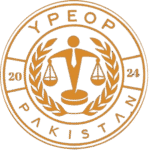Thirty years after governments pledged transformative change for women through the Beijing Declaration and Platform for Action, a new global study finds women remain almost invisible in the world’s news.
4 September 2025
New York – Women make up half of the global population, yet just a quarter of those who are seen or heard in the news. This statistic has barely changed in the last 15 years, with a mere nine-point change in 30 years.
The latest edition of the Global Media Monitoring Project (GMMP), produced by the international communication rights organization WACC and supported by UN Women’s ACT to End Violence against Women programme, is the largest and longest-running research study on gender representation in the media. This year’s findings reveal that women account for just 26 per cent of news subjects and sources, demonstrating a stark absence in broadcasting, radio and print.
This lack of representation is especially critical for young women and girls who do not find themselves represented in mainstream media.
Equally alarming: Gender-based violence barely makes the news, despite affecting half the world’s population. Fewer than 2 in 100 stories cover the abuse that far too many women experience.
In addition, only 2 of every 100 stories clearly challenge stereotypes, confirming that news media remains a sticky barrier to gender equality by reinforcing existing biases.
Journalism that counters gender stereotypes is now at its lowest level in three decades of GMMP monitoring, clear evidence that the growing global pushback against women and girls is undermining hard-won progress.
“Media reflects reality – and is essential for democracy and a fair and equal world for all women and girls. But when women are missing, democracy is incomplete,” said Kirsi Madi, UN Women Deputy Executive Director. “In today’s backlash against gender equality, these findings are both a wake-up call and a call to action. A radical rethink is needed so that media can play its role in advancing equality. Without women’s voices, there is no full story, no fair democracy, no lasting security and no shared future.”
Despite this sobering picture, there has been progress in some areas. For example, 41 per cent of reporters in traditional news articles are now women, an improvement from 28 per cent in 1995. This is especially important because stories by women journalists are consistently more likely to include women subjects (29 per cent) than stories by men (24 per cent), underlining the importance of parity in newsroom staffing as a pathway to more equal representation.
“The GMMP is a global accountability tool,” said Sarah Macharia, GMMP Expert Group Convenor. “Thirty years of data reveal both the persistence of deep-rooted stereotypes and the need to radically change our strategies toward a more inclusive, representative journalism.”
In media, voices of authority are still male-dominated. Women are more often quoted as eyewitnesses giving personal accounts – and not as subject matter experts, despite their qualifications.
The 2025 findings come at a landmark moment for gender equality, as the world enters the final five years of the Sustainable Development Goals, and marks Beijing+30 at the 80th UN General Assembly. The findings underscore an urgent truth: backlash is real, progress is stalled, and accountability cannot wait.
“Women and girls deserve to see themselves represented in media and to have their stories told. The responsibility now lies with governments, editors, platforms and policymakers to make this equality real,” said Kirsi Madi, UN Women Deputy Executive Director. “We will not back down until women’s voices are heard in every newsroom and every story.”
For more information, see the summary of key findings.
Media contacts
UN Women Media Team: [ Click to reveal ]
WACC media contact: Sara Speicher, [ Click to reveal ]
About UN Women
UN Women exists to advance women’s rights, gender equality and the empowerment of all women and girls. As the lead UN entity on gender equality, we shift laws, institutions, social behaviours and services to close the gender gap and build an equal world for all women and girls. We keep the rights of women and girls at the centre of global progress – always, everywhere. Because gender equality is not just what we do. It is who we are.
About ACT
The ACT programme is a joint initiative led by UN Women in collaboration with the UN Trust Fund to End Violence against Women and is funded by the European Union. With its focus on feminist movements, partnerships and coalition-building, ACT helps drive the evidence, momentum, and collaboration needed to stop violence against all women and girls.
About WACC
The World Association for Christian Communication (WACC) is an international organization that promotes communication as a basic human right, essential to people’s dignity and community. It advocates full access to information and communication, and promotes open and diverse media.
